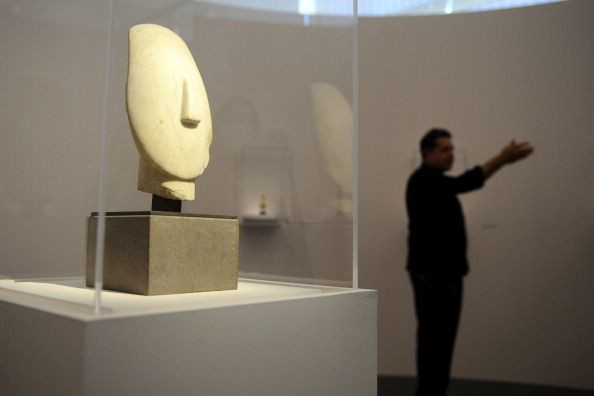4,500-Year-Old Architecture, Metal-Work Found Inside Greek ‘Pyramid’ Island

Archaeologists have unearthed remarkable monumental structures built about 4,500 years ago on a promontory on the Cycladic island of Keros, Greece. Apart from these impressive structures, they also found evidence of drainage tunnels and sophisticated metalwork on the promontory of Dhaskalio, which was linked to Keros by a narrow causeway, but is now an islet due to rising sea levels.
These excavations, conducted by a team from University of Cambridge, the Ephorate of Antiquities of Cyclades, and the Cyprus Institute, could mean that one of the earliest examples of plumbing or drainage tunnels were not set up by the Minoan civilization as the structures at Dhaskalio were built almost 1,000 years about the Minoan palace of Knossos on the Greek island of Crete.
Keros, which is known as the world’s oldest maritime sanctuary, was renowned for flat-faced marble figurines that were said to have inspired the works of Pablo Picasso. The latest excavations proved that even though the raw materials and skills were limited, the metalwork expertise was concentrated in Dhaskalio, which was then a part of Keros at the beginning of the Cycladic Bronze Age.
Cambridge University’s Michael Boyd, who is also the co-director of the excavation, said: “What we are seeing here with the metalworking and in other ways is the beginnings of urbanisation: centralisation, meaning the drawing of far-flung communities into networks centred on the site, intensification in craft or agricultural production, aggrandisement in architecture, and the gradual subsuming of the ritual aspects of the sanctuary within the operation of the site. This gives us a clear insight into a social change at Dhaskalio, from the earlier days where activities were centered on ritual practices in the sanctuary to the growing power of Dhaskalio itself in its middle years.”
Dhaskalio, which is shaped like a pyramid, might have become the focus “because it formed the best natural harbor on Keros, and had an excellent view of the north, south and west Aegean,” Cambridge University’s Professor Colin Renfrew, who is also the co-director of the excavation, said.
“Investigations at multiple points throughout the site have given a unique insight into how the architecture was organized and how people moved about the built environment,” Renfrew added.
The archaeologists uncovered that builders of Dhaskalio had shaped the pyramid-like structure into a series of terraces and had put the gleaming white stones on the flat surfaces. According to the researchers, about 1,000 tonnes of stones were imported for building Dhaskalio. They also discovered almost all parts Dhaskalio was built on. The team is currently studying the drainage systems to figure out if they were meant for managing clean water or sewage.
The structures and sophisticated systems underneath proved that Dhaskalio was once densely populated in spite of not being self-sufficient, which led the team to believe most of the food and such necessities were imported. Excavations around a decade ago found the first evidence of metalworking. The new finds include a lead axe, a mould for copper daggers, dozens of ceramic fragments covered in copper spills and two workshops of metalworking debris.
Evi Margaritis of the Cyprus Institute believes another reason for the expansion of Dhaskalio was the use of new agricultural practices.
“Dhaskalio has already provided important evidence about the cultivation of olive and grape, two key new domesticates that expanded the horizons of agriculture in the third millennium. The environmental programme is revealing how agricultural strategies developed through the lifetime of the site,” Margaritis said.
© Copyright IBTimes 2024. All rights reserved.





















